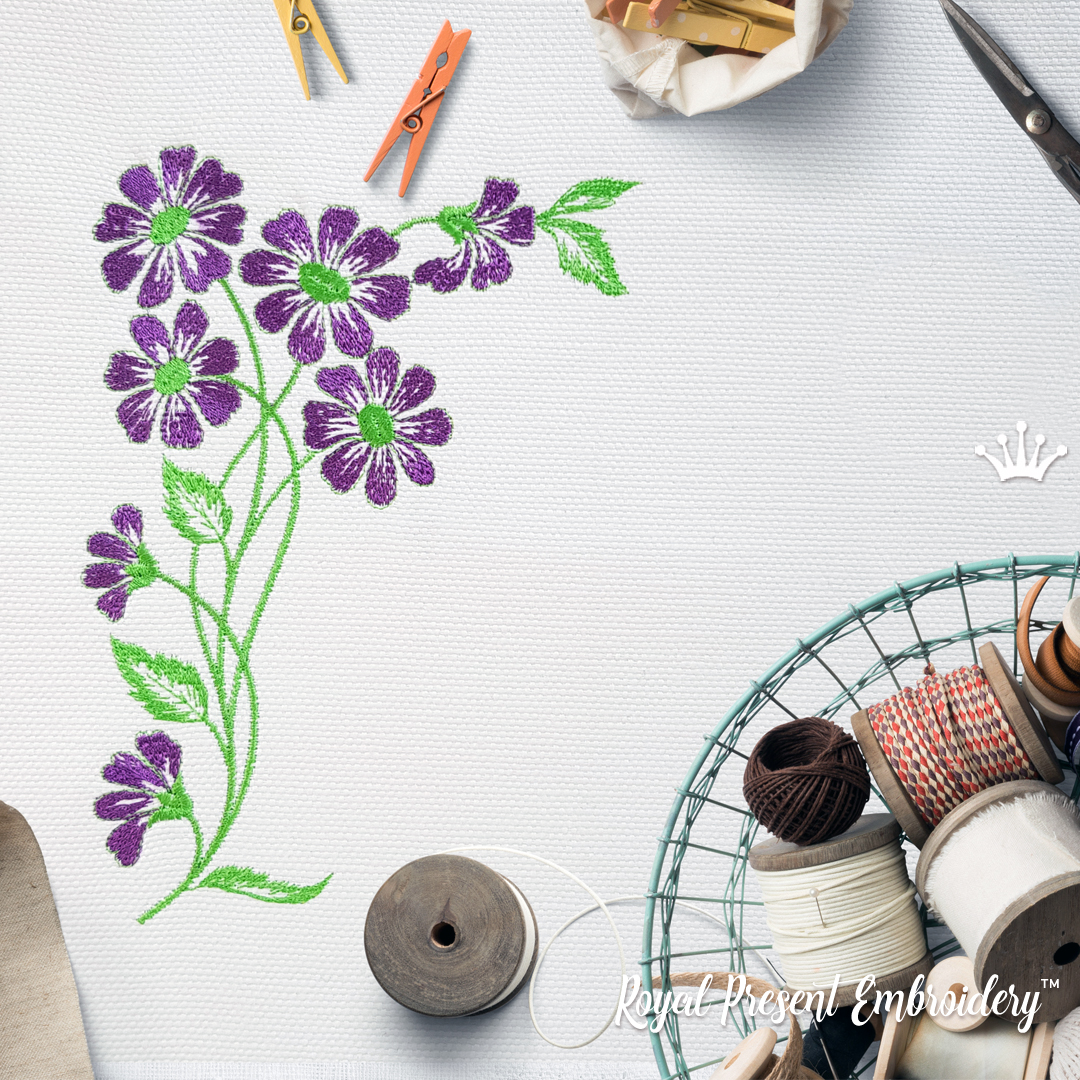The Wildflowers machine embroidery design is simple and delicate, blending the contemporary love for wildflowers with exquisite craftsmanship. Whether you choose to adorn your dress, scarf, or room décor with this design, its elegance will surely captivate onlookers with its flawless beauty.
Abundant blossoming herbs are provided by nature, growing in woodlands, prairies, and mountains without any human intervention. Wildflowers bloom solely to add beauty to the world. Their incredible fragrance, medicinal properties, and persistence amaze gardeners and inspire writers, poets, pharmacists, and artists. Machine embroidery designs find wildflowers the perfect models due to their pure and simple beauty. The symbolism of each plant varies depending on its specific application.
Machine Embroidery Design Wildflowers
Size: 134.7×192.1 mm (5.30×7.56 “), Stitches: 10144
Formats: .dst, .pec, .vip, .hus, .pes, .exp, dat, jef, .vp3, art
Each time the project requires an easy to perform, not dense design it is concerned a very light fabric or, on the contrary, a very dense and thick one. Machine Embroidery Design Wildflowers is a finding for both needs. It would look great on thin, plain weave, sheer fabric like organza. Organza is a see-through dress fabric made of silk, polyester, nylon. Embroidered flowers on organza adorn curtains, scarfs, bridal outfits and suncatchers. Mind that silk fabric requires only dry cleaning, while weaved of polyester can safely endure being washed in the machine (gentle cycle).
How to machine embroider on organza:
1. Preparation of the fabric. Organza isn’t inclined to shrinkage after washing, so no need of prewashing before machine embroider wildflowers design on it. Nevertheless, the fabric should be clean, smooth and without creases.
2. The stabilizer will be shown through the fabric, use heavyweight water-soluble stabilizer. Cut the excess stabilizer after stitching is done and soak the fabric to remove the rest. Air dry and iron it on the low temperature using the pressing cloth. In the case where the soaking of the fabric should be avoided, using an iron-away or heat-away stabilizer is a solution. After embroidery, it is removed by ironing without steam.
3. Hooping. Arrange the stabilizer on the right side of the fabric and hoop both layers together. In case organza and water-soluble stabilizer turn to be too slippery and won’t hoop tightly, attach cohesive tape that sticks only to itself, to the inner hoop. It’s used to protect the fine cloth and keep it tightened. A cotton strip wrapped around the inner hoop is also a solution to the problem. In that way, enough tension is provided for the hoop to keep the slippery material stable. Thus, the marks from the hoop minimize too.
Practical advice: A convenient size hoop overlay can be cut out of a roll of car anti-slip mat.
4. Needles to choose for embroidery on organza. A sharp needle is required, which will make the finest punctures in the tissue. The principle is — the thinner, the better. The sharp sewing needle size 75/11 turns out to be the best choice for most projects.
5. Threads can be used both rayon and polyester.
6. Bobbing thread. When stitching machine embroidery flowers on organza, remember, since the fabric is transparent, both face and bottom of the design will be seen. Bobbin thread has to be of the same color as the top one. Thus, with each colour change of upper thread — comes the bobbin change. Make sure the bobbin tension is not too tight to pull the fabric down and cause puckering. Loosening the bobbin tension just a bit will solve the problem.
You may also like
Machine Embroidery Design small Royal Vintage corner

Author: Ludmila Konovalova
My name is Ludmila Konovalova, and I lead Royal Present Embroidery. Embroidery for me is more than a profession; it is a legacy of my Ukrainian and Bulgarian heritage, where every woman in my family was a virtuoso in cross-stitch and smooth stitching. This art, passed down through generations, is part of my soul and a symbol of national pride.
Date: 16.03.2015




 Get Sign-In Link
Get Sign-In Link Login with Google
Login with Google Login with Facebook
Login with Facebook Login with Amazon
Login with Amazon Login with Paypal
Login with Paypal